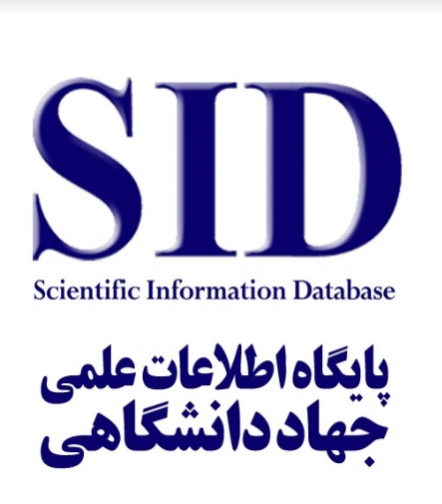نقش الگوی بانکداری جامع در کمک به بانکها برای تأمین مالی بنگاههای اقتصادی ( تجربه کشور ژاپن)
کلمات کلیدی:
بانکداری جامع, بانکداری تجاری, تأمین مالی, بنگاهچکیده
بانکها در برخی کشورها، بهویژه در ژاپن و آلمان، بهعنوان بازیگران مهم در حاکمیت شرکتی در شرکتهای غیرمالی شناخته میشوند. بهعبارتدیگر بانکها علاوه بر نقش بانک تجاری، نقش بانک سرمایهگذاری را نیز ایفا میکند. به این مدل بانکداری، بانکداری جامع گفته میشود که متفاوت از الگوی بانکداری تجاری است؛ لذا تجربه این نوع بانکداری از حیث نحوه مداخله، مالکیت، حکمرانی شرکتی، میزان ریسک، سودآوری و... قابلبررسی و مطالعه است و به نظر میرسد که الگوی بانکداری جامع میتواند مزایای برای ایران در مسیر توسعه داشته باشد؛ لذا این پژوهش تلاش خواهد نمود تا با تجزیهوتحلیل تجربه الگوی بانکداری جامع که با عنوان الگوی بانکداری اصلی ژاپن شناخته میشود به احصا چالشها و فرصتهای این الگو بپردازد و از این مسیر راهبردهایی برای نظام بانکی ایران در جهت بهبود تأمین مالی بنگاههای اقتصادی فراهم سازد.
دانلودها
مراجع
Aoki, M. (1994). The Japanese firm as a system of attributes. In M. Aoki & R. Dore (Eds.), The Japanese firm: Sources of competitive strength (pp. 11–40). Oxford University Press.
Aoki, M., & Jackson, G. (2008). Understanding an emergent diversity of corporate governance and organizational architecture: An essentiality-based analysis. Industrial and Corporate Change, 17(1), 1–27.
Aoki, M., Patrick, H., & Sheard, P. (1995). The Japanese main bank system: An introductory overview. In M. Aoki & H. Patrick (Eds.), The Japanese main bank system: Its relevance for developing and transforming economies. Oxford University Press. https://doi.org/10.1093/0198288997.003.0001
Baba, N., & Hisada, T. (2002). Japan's financial system: Its perspective and the authorities' roles in redesigning and administering the system. Institute for Monetary and Economic Studies, Bank of Japan.
Berglöf, E. (1990). Capital structure as a mechanism of control: A comparison of financial systems. In M. Aoki, B. Gustafsson, & O. E. Williamson (Eds.), The firm as a nexus of treaties. Sage Publications.
Canals, J. (1997). The Japanese main bank system and its influence on industry. In Universal banking: International comparisons and theoretical perspectives. Oxford University Press. https://doi.org/10.1093/acprof:oso/9780198289977.003.0008
Cull, R., Martinez Peria, M. S., & Verrier, J. (2017). Bank ownership: Trends and implications. International Monetary Fund.
De Long, B. (1991). The great American universal banking experiment. The International Economy, January–February.
Dewatripont, M., & Roland, G. (1993). The design of reform packages under uncertainty.
Ha, V. D., & Dang, T. T. N. (2021). Ex post monitoring and loan repayment performance in rural Vietnam. The Journal of Asian Finance, Economics and Business, 8(8), 365–373. https://doi.org/10.13106/jafeb.2021.vol8.no8.0365
Kornai, J. (1980). The economics of shortage. North-Holland.
Litwack, J., & Qian, Y. (1993). Economic transition strategies: Fiscal instability can favor unbalanced investment. Stanford University.
Mayer, C. (1988). New issues in corporate finance. European Economic Review, 32, 1167–1188.
Miyajima, S., & Weber, W. E. (2001). A comparison of national banks in Japan and the United States between 1872 and 1885. Monetary and Economic Studies, 19(1), 31–48.
Nasrzadeh, S., Abolhasani Hestiani, A., Shaygani, B., & Motaghi, S. (2023). Analytical evaluation of indicators affecting credit risk in Islamic and conventional banking: With emphasis on good governance indicators. Islamic Financial Research (Tahghighat-e Maliy-e Eslami), 12(Special Issue: First National Conference on Islamic Banking in Iran), 149–174. https://doi.org/10.30497/ifr.2023.244301.1820
Ogawa, K., Sterken, E., & Tokutsu, I. (2005). Bank control and the number of bank relations of Japanese firms.
Rybczynski, T. M. (1984). Industrial finance systems in Europe, U.S., and Japan. Journal of Economic Behavior & Organization, 5(3–4), 275–286.
Sherif, K., Borish, M. S., & Gross, A. (2003). State-owned banks in the transition: Origins, evolution, and policy responses. World Bank Publications.
Sunamura, S. (2004). The development of main bank managerial capacity. In M. Aoki & H. Patrick (Eds.), The Japanese main bank system: Its relevance for developing and transforming economies. Oxford University Press. https://doi.org/10.1093/0198288997.003.0007



